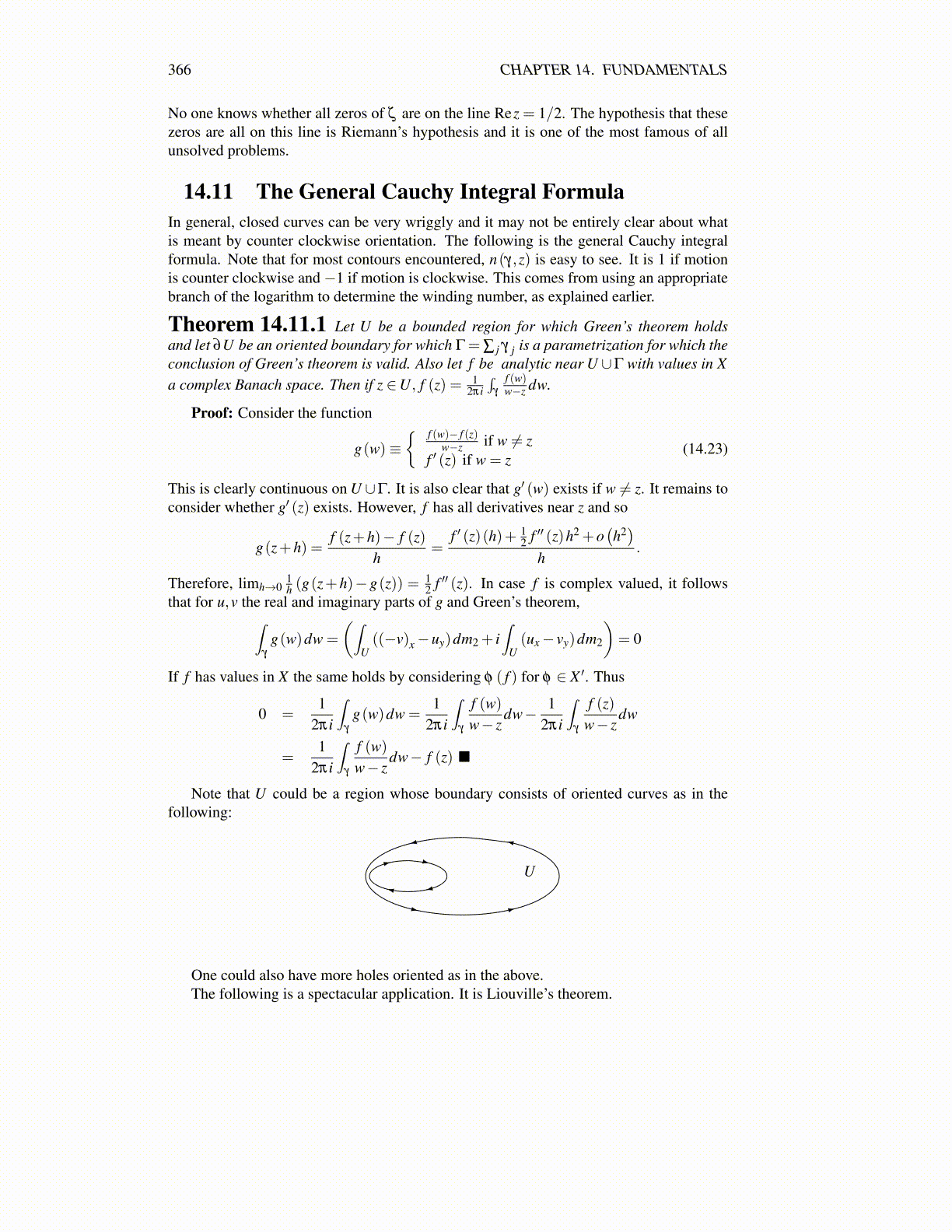
366 CHAPTER 14. FUNDAMENTALS
No one knows whether all zeros of ζ are on the line Rez = 1/2. The hypothesis that thesezeros are all on this line is Riemann’s hypothesis and it is one of the most famous of allunsolved problems.
14.11 The General Cauchy Integral FormulaIn general, closed curves can be very wriggly and it may not be entirely clear about whatis meant by counter clockwise orientation. The following is the general Cauchy integralformula. Note that for most contours encountered, n(γ,z) is easy to see. It is 1 if motionis counter clockwise and −1 if motion is clockwise. This comes from using an appropriatebranch of the logarithm to determine the winding number, as explained earlier.
Theorem 14.11.1 Let U be a bounded region for which Green’s theorem holdsand let ∂U be an oriented boundary for which Γ = ∑ j γ j is a parametrization for which theconclusion of Green’s theorem is valid. Also let f be analytic near U ∪Γ with values in Xa complex Banach space. Then if z ∈U, f (z) = 1
2πi∫
γ
f (w)w−z dw.
Proof: Consider the function
g(w)≡{ f (w)− f (z)
w−z if w ̸= zf ′ (z) if w = z
(14.23)
This is clearly continuous on U ∪Γ. It is also clear that g′ (w) exists if w ̸= z. It remains toconsider whether g′ (z) exists. However, f has all derivatives near z and so
g(z+h) =f (z+h)− f (z)
h=
f ′ (z)(h)+ 12 f ′′ (z)h2 +o
(h2)
h.
Therefore, limh→01h (g(z+h)−g(z)) = 1
2 f ′′ (z). In case f is complex valued, it followsthat for u,v the real and imaginary parts of g and Green’s theorem,∫
γ
g(w)dw =
(∫U((−v)x−uy)dm2 + i
∫U(ux− vy)dm2
)= 0
If f has values in X the same holds by considering φ ( f ) for φ ∈ X ′. Thus
0 =1
2πi
∫γ
g(w)dw =1
2πi
∫γ
f (w)w− z
dw− 12πi
∫γ
f (z)w− z
dw
=1
2πi
∫γ
f (w)w− z
dw− f (z) ■
Note that U could be a region whose boundary consists of oriented curves as in thefollowing:
U
One could also have more holes oriented as in the above.The following is a spectacular application. It is Liouville’s theorem.